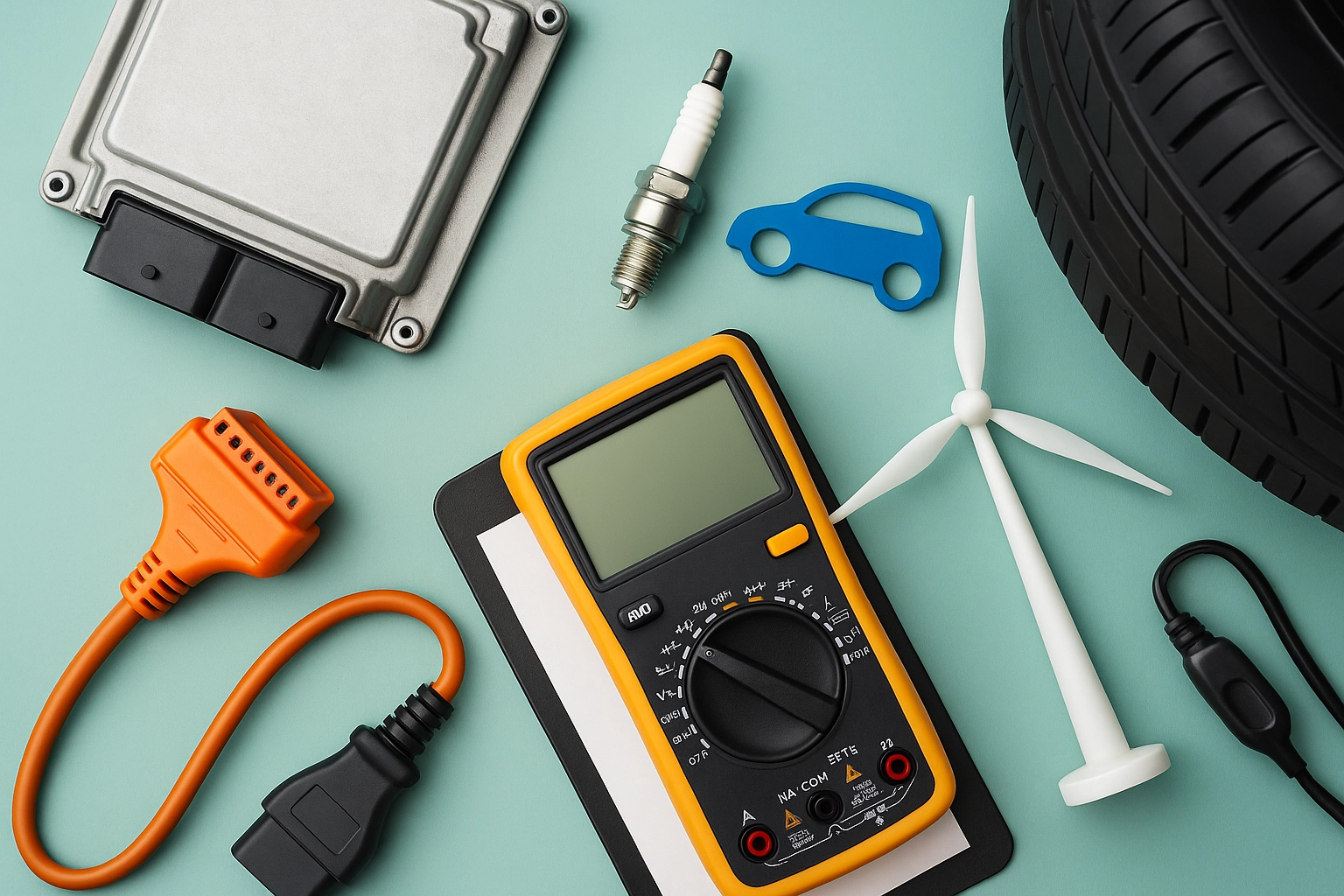IEC 63398 Hybrid Vehicle Power Electronics Durability Test
The IEC 63398 test protocol is designed to evaluate the durability and reliability of power electronics used in hybrid vehicles. This standard ensures that these components can withstand harsh environmental conditions, mechanical stresses, and operational demands over extended periods without compromising performance or safety.
Hybrid electric vehicles (HEVs) combine an internal combustion engine with one or more electric motors to provide a balance between fuel efficiency and performance. The power electronics in HEVs are responsible for managing the flow of energy among various components such as the battery, motor, generator, and other systems. These components must be robust enough to handle high power demands during acceleration, braking, and regenerative braking.
The IEC 63398 test assesses how well these power electronics can endure repeated cycles of operation under realistic driving conditions. This includes testing the electronic control units (ECUs), inverters, converters, and other critical components that manage the flow of electrical energy within the vehicle's powertrain.
The test simulates real-world scenarios such as stop-and-go traffic, highway cruising, city driving, and rapid acceleration/deceleration. By subjecting these components to a range of environmental factors like temperature fluctuations, humidity, dust, and vibration, the IEC 63398 test ensures that hybrid vehicles meet stringent reliability standards.
During testing, engineers monitor key performance indicators (KPIs) such as power conversion efficiency, heat dissipation, and signal integrity. The goal is to identify any potential weaknesses in the design or manufacturing process early on so that necessary improvements can be made before mass production begins.
The IEC 63398 test is critical for automakers looking to ensure their hybrid vehicles meet regulatory requirements while maintaining high levels of quality and safety. It helps manufacturers identify areas where further development might be needed, ensuring they deliver products that are not only environmentally friendly but also reliable and long-lasting.
By adhering to this standard, automotive companies can demonstrate their commitment to producing safe, efficient, and sustainable vehicles. This is particularly important given the increasing focus on reducing greenhouse gas emissions and improving fuel efficiency across the industry.
Scope and Methodology
| Aspect | Description |
|---|---|
| Test Environment | The test environment replicates real-world conditions, including temperature ranges from -40°C to +85°C, humidity levels up to 93%, and vibration frequencies between 10 Hz and 1 kHz. The test chamber is equipped with sensors capable of monitoring critical parameters like temperature, humidity, and vibration. |
| Test Cycles | The test consists of multiple cycles simulating various driving scenarios such as city driving, highway cruising, and rapid acceleration/deceleration. Each cycle lasts approximately 1 hour, followed by a cool-down period. |
| Data Collection | During testing, engineers collect data on power conversion efficiency, heat dissipation, signal integrity, and other relevant metrics. This information is used to assess the performance of each component throughout the test. |
Why Choose This Test
- The IEC 63398 test ensures that power electronics in hybrid vehicles meet stringent durability and reliability standards.
- This test is essential for identifying potential weaknesses early on, allowing manufacturers to make necessary improvements before mass production begins.
- By adhering to this standard, automakers can demonstrate their commitment to producing safe, efficient, and sustainable vehicles.
- The IEC 63398 test helps ensure that hybrid vehicles meet regulatory requirements while maintaining high levels of quality and safety.
- This test is particularly important given the increasing focus on reducing greenhouse gas emissions and improving fuel efficiency across the industry.
- Compliance with this standard can provide a competitive advantage in the marketplace, as consumers increasingly seek out environmentally friendly options.
- The IEC 63398 test ensures that hybrid vehicles are capable of handling extreme environmental conditions, mechanical stresses, and operational demands over extended periods.
International Acceptance and Recognition
The IEC 63398 Hybrid Vehicle Power Electronics Durability Test is widely recognized by automotive manufacturers and regulatory bodies worldwide. It has been adopted as a standard for evaluating the durability of power electronics in hybrid vehicles, ensuring that these components meet stringent reliability requirements.
Automakers from various countries, including Japan, Germany, China, and the United States, have incorporated this test into their quality assurance processes. By adhering to IEC 63398, manufacturers can ensure that their products comply with international regulations while also meeting customer expectations for performance and longevity.
The standard is based on internationally recognized guidelines such as ISO/IEC 17025 and ISO 9001, which provide a framework for laboratories conducting such tests. This ensures consistency in testing procedures across different locations and organizations, further enhancing the credibility of the results obtained from this test.
Adherence to IEC 63398 not only demonstrates a company's commitment to quality but also provides peace of mind for consumers who rely on reliable power electronics for safe operation. As hybrid vehicles continue to gain popularity, ensuring that these components are robust enough to withstand real-world conditions is becoming increasingly important.





